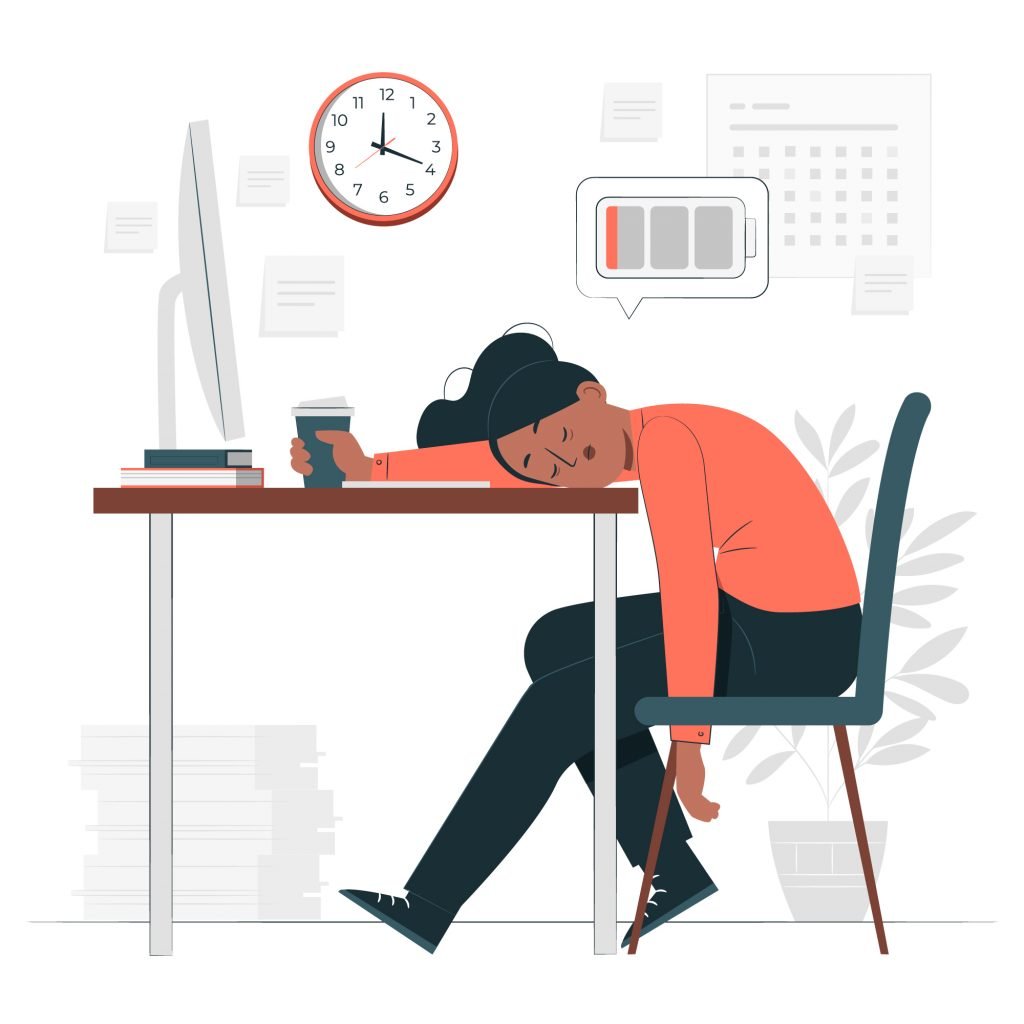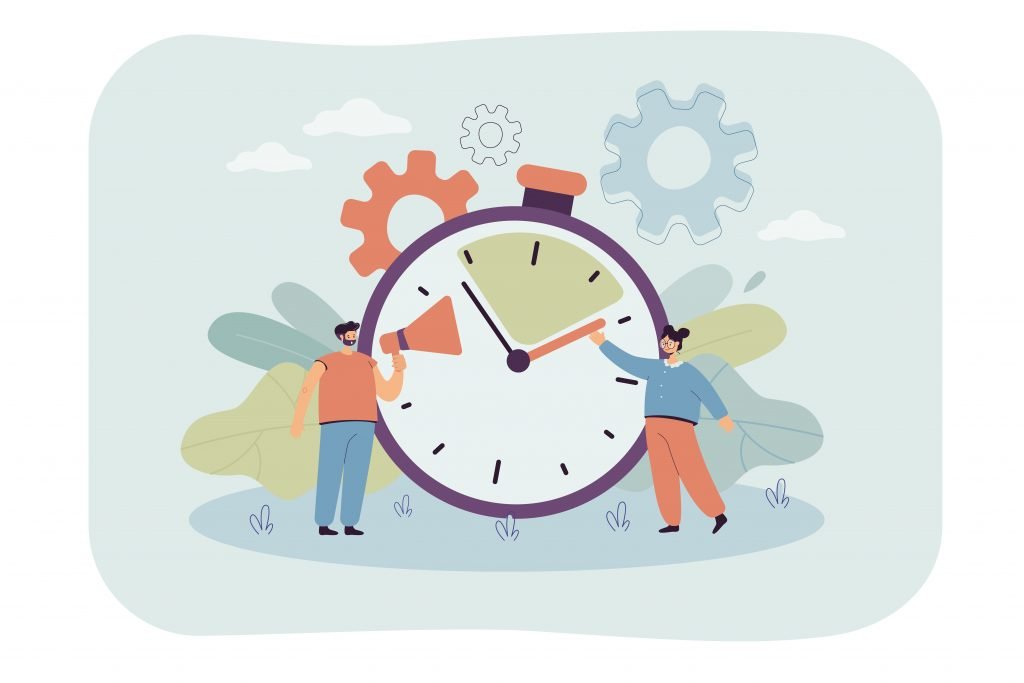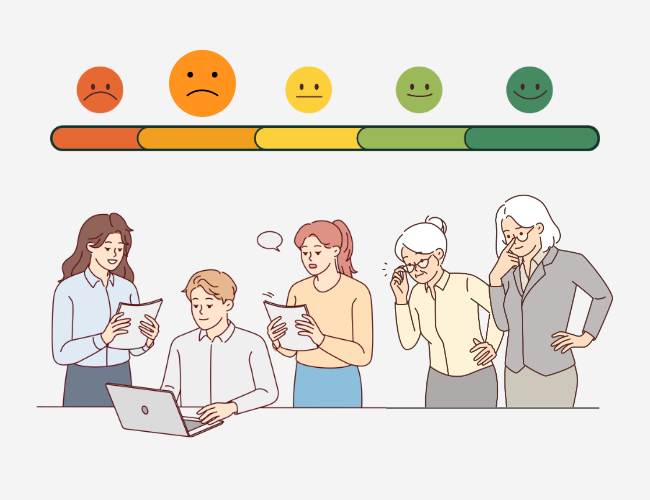In a world reshaped by hybrid work and evolving workplace norms, the conventional boundaries of the 9-to-5 grind are steadily eroding. A recent Microsoft research sample unveiled an intriguing phenomenon—the final stretch of the workday (4 to 6 PM) has emerged as a “dead zone” in many companies.
As employees embrace newfound autonomy, will this drive a more dynamic and personalized approach to productivity or pave the way for unforeseen challenges?
This article covers the perks and pitfalls of work flexibility and effective strategies to ensure employees and organizations thrive in this evolving work landscape.
Pressed for time? Here’s a quick summary…
- Microsoft has observed a “triple peak” pattern, where workers’ keyboard activity spikes in the morning, early afternoon, and 10 PM.
- While work flexibility can promote work-life balance, mitigate fatigue, and boost employee retention, it can also create clashes in schedule coordination, lead to an “always on-call” culture, and decrease motivation.
- Establishing clear and consistent guidelines is key to ensuring a fair and productive flexible work environment.
- Leveraging technology for asynchronous communication facilitates collaboration, connection, and learning despite an employee’s geographical location or preferred work hours.
- Incorporating priority tags such as “#criticalnow” can streamline workflows and ensure time-sensitive tasks receive immediate attention.
The Rise Of The New Workday Dead Zone
The “triple peak” phenomenon, as observed by Microsoft, reveals an intriguing trend in modern workplaces. Workers’ keyboard activity spikes in the morning and afternoon, with a surprising third peak around 10 PM. Meetings scheduled within this 4-6 PM dead zone have dropped 7% from last year, signaling the death of the traditional 9-to-5 workday and the rebirth of workplace flexibility.
Scheduling meetings has become difficult, and I’ve learned: Do it in the morning and never on Friday.
Maria Banach, Pharmaceutical Operations Director
The Perks & Pitfalls Of Flexibility
The resurgence of work flexibility presents both enticing perks and potential pitfalls that shape the modern work landscape.

Perks
Promote Work-Life Balance
This “dead zone” trend isn’t characterized by laziness but by embracing work-life balance. Employees are using the flextime between 4 and 6 PM to attend to personal commitments, like childcare, hitting the gym, or avoiding rush hour traffic, while planning to make up for it later in the evening. Despite a massive push to return to office, workers continue to value the freedom of managing their own schedules.
Mitigate Fatigue
Embracing flexibility from 4 to 6 PM offers a refreshing antidote to end-of-day fatigue. Rather than counting down the minutes until they can clock out, this built-in time for personal needs allows employees to take a break and recharge. When they return to work, they’re not just going through the motions; they’re fully productive, motivated, and engaged.
I hate meetings after 4. My brain is done.
Mercedes Aycinena, CEO of Komet USA
Boost Employee Retention
Flexible work arrangements have become the norm, and free time reigns as the most preferred employee benefit. For jobseekers and current employees alike, the autonomy to determine their work hours has emerged as a crucial factor in choosing or staying with a job. Mercedes Aycinena, CEO of Komet USA, credits flexibility with a reduction in turnover from 50% to 15% over the past year.
Pitfalls
Schedule Coordination Challenges
The beauty of global connectivity can quickly turn into a scheduling nightmare. As Maria Banach, a pharmaceutical operations director in Oregon, points out, urgent issues demanding immediate attention can face delays in resolution when team members go offline due to time zone differences. The limited overlapping business hours can cause problems to linger overnight, impacting productivity and efficiency.

Burnout
Some workers express dissatisfaction with their workdays, citing longer and less predictable hours since the adoption of flexible breaks during business hours. The constant feeling of being on-call blurs work-life boundaries, making it difficult to plan personal time effectively, potentially leading to burnout.
Decreased Motivation
One study revealed that working non-standard hours can harm intrinsic motivation—the inherent drive to perform and find enjoyment in one’s work. This finding challenges the premise behind offering flexibility: the belief that giving employees autonomy over their work arrangements will boost productivity and job satisfaction. However, if a substantial portion of their workday falls during off-hours when motivation is lower, the benefits of flexibility may be questionable.
A lot of companies have taken a loose approach under the belief that we’re all adults, so everyone will be self-disciplined and stay motivated at whatever time they’re working. That’s just not true.
Albert Fong, Vice President of Product Marketing at Kanarys
Workplace Adaptations & Strategies
As the 4-6 PM dead zone continues to reshape the workday and influence workplace norms, implementing unique and effective strategies is paramount to ensure employees and organizations thrive in a new era of flexibility.

Set Standard
Establishing clear and consistent guidelines is key to ensuring a fair and productive work environment.
- Foster Inclusive Flexibility: If flexible work arrangements are in place, they should extend to all employees, regardless of their location, roles, or seniority.
- Establish Time Blocks: Implement specific time blocks for meetings and dedicated no-meeting periods to avoid disrupting workdays. This allows employees to concentrate on tasks without interruptions while accommodating diverse time zones.
- Uphold Boundaries: Communicate that employees are not obligated to respond to emails or requests beyond traditional work hours. Respecting personal time enables employees to recharge and stay engaged during designated working hours.
Ana Paula Calvo, an associate partner at McKinsey & Co., demonstrates considerate flexibility by conducting norm-setting sessions with her team. She assures them that working off-hours is not expected and that late replies do not demand immediate responses.
People know that if I get back to them at 11 at night, that doesn’t mean I’m expecting them to reply right away.
Ana Paula Calvo, Associate Partner at McKinsey & Co.
Embrace Asynchrony
In a flexible work environment, mastering asynchrony is vital for effective internal communication. Technology is a powerful tool for facilitating collaboration, connection, and learning despite an employee’s geographical location or preferred work hours.
For example, recorded tutorials have become a core component of Deloitte US’s firm’s professional development program.
Getting employees together for an end-of-the-day training session is seldom an option anymore. [Employees] hone new skills when they feel like it.
Anthony Stephan, Chief Learning Officer of Deloitte US
Utilize Tags
Companies can enhance efficiency by incorporating priority-signaling tags, such as “#criticalnow,” into emails and other forms of communication to highlight urgent matters. This simple strategy allows team members to prioritize and respond promptly to essential messages, streamlining workflows and ensuring time-sensitive tasks receive immediate attention.
4-Day Workweek Trial
Consider implementing a trial period of a 4-day workweek, where employees work longer hours on the days they are in the office to compensate for the reduced working day. This policy not only acknowledges the importance of flexible scheduling but also provides an opportunity to test the impact on productivity and employee satisfaction. Companies like Buffer and Microsoft Japan have reported positive outcomes from such experiments, including increased focus and higher employee morale.
Customizable Afternoon Breaks

Recognizing that employees have diverse personal commitments, organizations can introduce a policy that allows individuals to customize their afternoon breaks. Whether it’s taking a longer break to spend quality time with family, engaging in physical activity, or pursuing personal hobbies, this approach acknowledges the value of individual autonomy and promotes a healthier work-life balance. Employees can then return to their work tasks with renewed energy and focus.
Mental Health and Well-Being Support
Prioritize employee well-being by providing mental health support and resources during the 4-6 PM timeframe. Offer access to virtual relaxation sessions, mindfulness exercises, or wellness workshops, which employees can participate in as part of their break. This proactive approach to mental health can help reduce burnout and increase overall job satisfaction.












